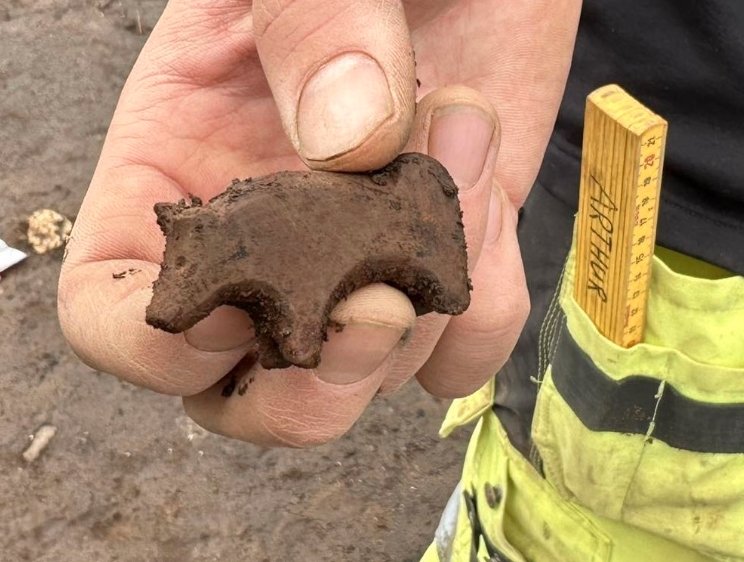In a fascinating archaeological discovery, a small animal figurine believed to be a medieval toy has been unearthed in Seyðisfjörður, a village in East Iceland. The toy, carved from volcanic tuff, was found during an excavation led by archaeologist Ragnheiður Traustadóttir. This rare find, which resembles a bear or a boar, offers a unique glimpse into the lives of children in medieval Iceland and has sparked significant interest among historians and archaeologists.
The Remarkable Discovery
The discovery of the medieval toy in Seyðisfjörður has captivated the archaeological community. The small figurine, measuring just under two inches in length, was found in remarkably good condition despite being buried for centuries. Carved from volcanic tuff, a type of soft volcanic rock, the toy features intricate details that suggest it was a cherished item.
Archaeologist Ragnheiður Traustadóttir, who led the excavation, described the find as extraordinary. She noted that it is rare to discover toys from this period, especially ones that are so well-preserved. The figurine’s condition allows researchers to study its craftsmanship and speculate about its significance in medieval Icelandic society.

The toy’s discovery was announced in a statement to the local paper Austurfrétt, where Traustadóttir shared her excitement and the various theories about the figurine’s origin. While most experts believe it represents a bear or a boar, some have suggested it could be an Icelandic dog. However, Traustadóttir herself leans towards the former interpretations, citing the figurine’s physical characteristics.
Historical Context and Significance
The medieval toy found in Seyðisfjörður provides valuable insights into the daily lives of children in medieval Iceland. During this period, toys were not commonly found in archaeological sites, making this discovery particularly significant. The figurine’s craftsmanship indicates that it was likely made with care, possibly by a skilled artisan, and suggests that children in medieval Iceland had access to such items.
The toy’s presence in Seyðisfjörður, a village with a rich history dating back to the Viking Age, adds to the understanding of the region’s cultural and social dynamics. The village has been the site of numerous archaeological excavations since 2020, uncovering artifacts that date from 940 to 1100 C.E. These finds, including game pieces, pearls, and now the animal figurine, paint a picture of a vibrant and diverse community.
The discovery also highlights the importance of toys in historical contexts. While often overlooked, toys can provide a wealth of information about the socialization, education, and daily activities of children in past societies. The Seyðisfjörður figurine, with its detailed carving and well-preserved state, offers a rare opportunity to explore these aspects of medieval life.
Broader Implications of the Find
The unearthing of the medieval animal toy in Seyðisfjörður has broader implications for the field of archaeology and the study of medieval history. This discovery not only adds to the growing body of knowledge about medieval Iceland but also underscores the significance of everyday objects in understanding historical societies. The toy’s preservation and the context in which it was found provide a unique window into the past.
For the local community, the find has generated excitement and pride, drawing attention to Seyðisfjörður’s rich archaeological heritage. The discovery has also inspired renewed interest in the village’s history, encouraging further exploration and research. The involvement of experts in the analysis and preservation of the toy ensures that it will be studied and appreciated for years to come.
The story of the medieval toy serves as a reminder of the potential for new and exciting discoveries in archaeology. It highlights the importance of curiosity and meticulous excavation in uncovering the hidden stories of our past. As more information about the toy and its historical context is revealed, it will undoubtedly contribute to a deeper understanding of medieval Iceland and the lives of its inhabitants.















